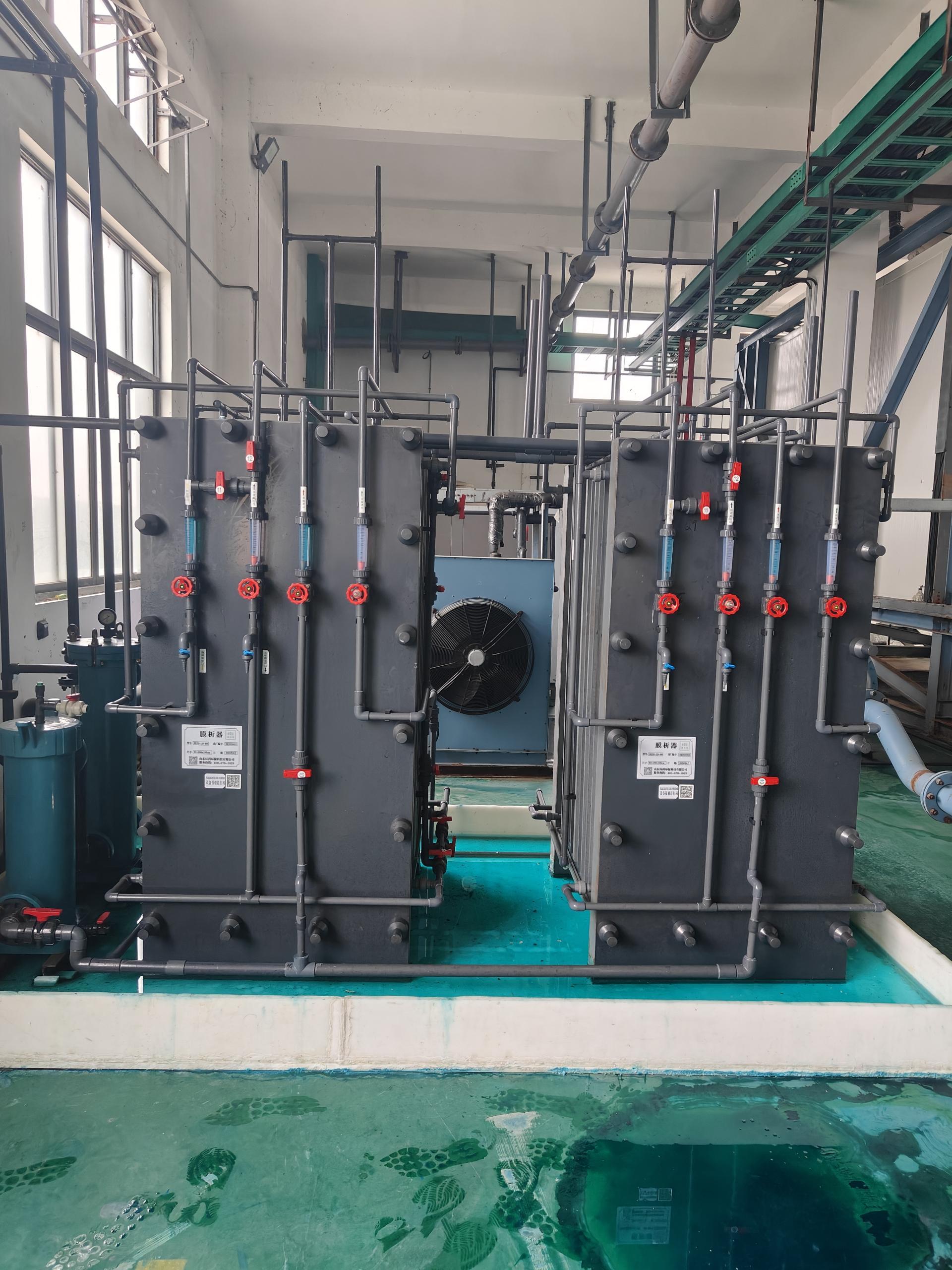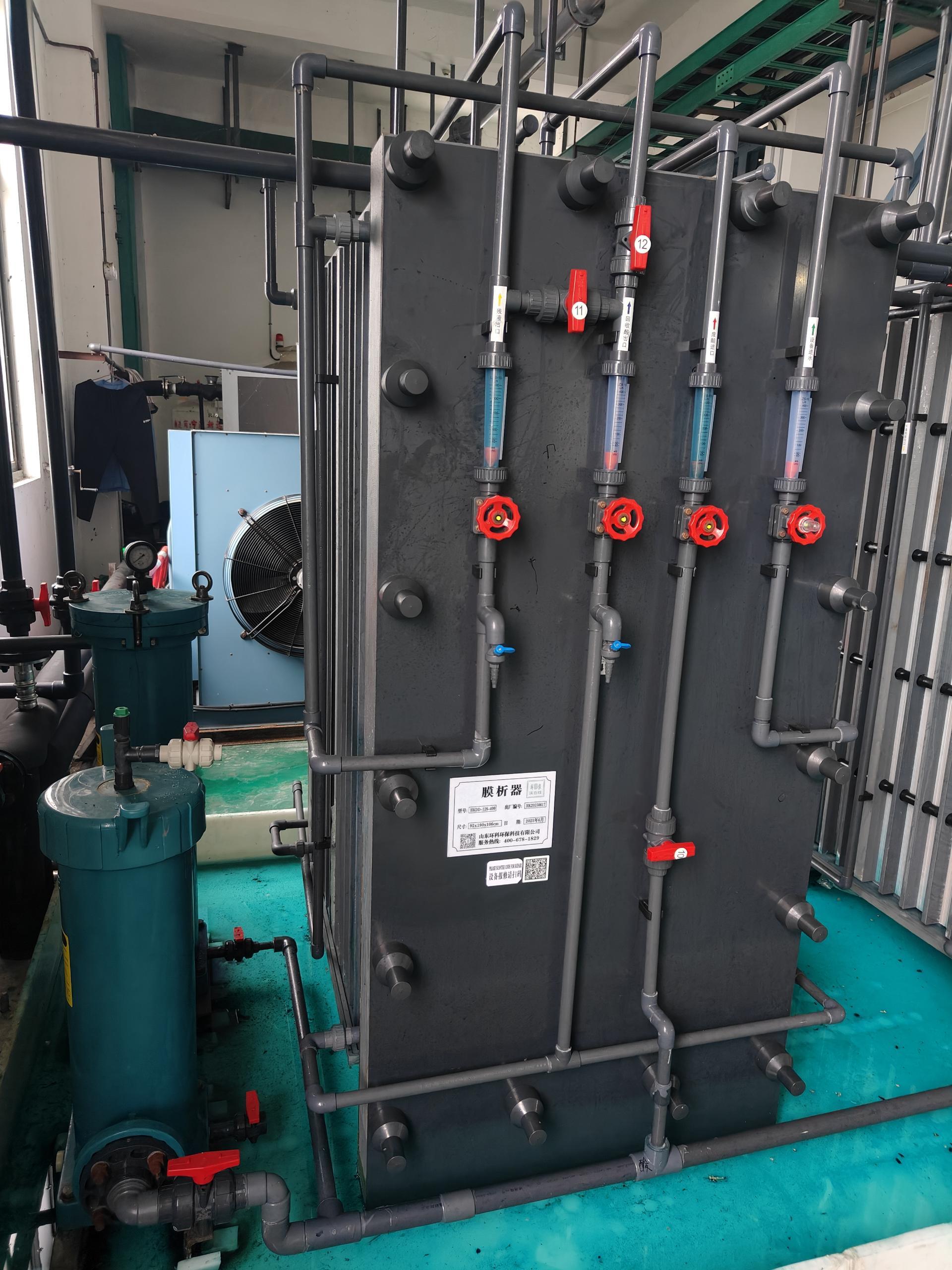14
2025
-
10
Membrane analysis technology: Solving the problem of waste acid treatment, creating a new model of "green stripping" of metal ions and acid circulation
Author:
I. Dual Challenges in Waste Acid Treatment: Coexistence of resource waste and environmental pressure
In industrial scenarios such as steel, electroplating, and chemical engineering, the output of waste acid liquid is huge and its composition is complex. Traditional treatment methods have always faced an intractable predicament: severe waste of resources: The strong acids such as sulfuric acid and hydrochloric acid contained in the waste acid have not been recovered, and the production process requires a continuous consumption of a large amount of fresh acid liquid, increasing the cost of raw materials. High environmental pollution risk: The direct discharge of heavy metal ions such as iron, copper and nickel, as well as organic matter in waste acid, can easily cause soil acidification and water pollution, threatening the ecological environment. The treatment cost remains high: When using the neutralization method for treatment, it requires the consumption of chemicals such as lime and caustic soda, and at the same time generates a large amount of hazardous waste residue, resulting in high subsequent disposal costs. How can we efficiently remove metal ions while recovering useful components from waste acid? The membrane chromatography technology centered on "concentration difference-driven + ion-exchange membrane selective permeability" has provided a breakthrough solution.
Ii. Working Principle of Membrane chromatography Technology: Precise ion separation dominated by concentration difference
Core mechanism: The synergistic effect of concentration gradient and ion selection
Concentration difference-driven: By using ion-exchange membranes to separate high-concentration waste acid solution from low-concentration receiving solution (such as pure water), solutes (such as acid radical ions) naturally diffuse from the high-concentration side to the low-concentration side under the action of concentration gradients. Ion-selective filtration: The anion exchange membrane (anion membrane) is positively charged, allowing only anions (such as SO₄²⁻, Cl⁻) to pass through while blocking cations (such as Fe²⁺, Cu²⁺). Cation exchange membranes (anion membranes) are the opposite and are mainly used for the separation of salt solutions under alkaline conditions. 2. "Double Guarantee" for Metal Ion Interception
Size screening effect: The hydration radius of H⁺ is relatively small, allowing it to pass through the pores of the membrane preferentially. The hydration radius of metal ions is larger and they are retained by the membrane structure. Charge repulsion effect: The anion membrane has a charge repulsion property for high-valent metal cations, further preventing them from passing through the membrane layer. Reaction synergy promotion: OH⁻ in the recovery chamber passes through the membrane into the stock solution chamber and combines with H⁺ to form water, which not only promotes the migration of acid radical ions but also reduces the migration efficiency of metal ions.


3. Typical application case: Separation of sulfuric acid-ferrous sulfate system
In the waste liquid from steel pickling, the concentration of sulfuric acid is usually 20%-30%, and the content of ferrous sulfate can reach 100-200g/L. After treatment with anion membrane chromatography technology, the recovery rate of sulfuric acid can reach 80%-90%, and the retention rate of ferrous sulfate exceeds 90%. The recovered sulfuric acid can be directly reused in the pickling process, and the ferrous sulfate in the residual liquid can be further extracted and utilized or neutralized.
Iii. Core Advantages of Membrane Analysis Technology: A comprehensive breakthrough from efficient processing to green recycling
The removal rate of metal ions exceeds 90%, and the separation effect is stable
Experimental data show that the membrane chromatography technology can achieve a retention rate of 90% to 99% for transition metal ions such as Fe²⁺, Cu²⁺, and Ni²⁺. Taking the treatment of waste sulfuric acid produced as a by-product of titanium dioxide as an example, the retention rate of ferrous sulfate exceeds 99%, and the concentration of recovered acid is no less than 22%, which can directly meet the requirements for production reuse.
2. The acid recovery rate reaches 80% to 90%, and the resource utilization rate is significantly improved. In the wet copper smelting industry, membrane chromatography technology can recover over 80% of sulfuric acid, reducing the consumption of liquid caustic soda required for mother liquor treatment. In the production of foil formation, the recovery rate of sulfuric acid exceeds 85%, and the residue and salt content after treatment are significantly reduced, alleviating the pressure on subsequent treatment.
3. Zero energy consumption and no secondary pollution, in line with the concept of green development
Membrane evolution technology does not require an external electric field or high-temperature and high-pressure conditions. It is driven solely by concentration differences and has extremely low energy consumption. The treatment process does not add any chemical reagents, and no waste gas or waste residue is produced, avoiding secondary pollution from the source and meeting the requirements of green chemistry.
4. It has outstanding economic benefits and reduces the operating costs of enterprises
Take an electroplating plant with an annual output of 100,000 tons of sulfuric acid as an example. After adopting membrane chromatography technology, it can save over 10 million yuan in the cost of purchasing fresh acid every year. At the same time, it reduces the cost of hazardous waste residue disposal, eases the pressure on enterprises to comply with environmental protection regulations, and enhances the overall profit level.
Iv. Application Scenarios of membrane analysis Technology: Covering the waste acid treatment demands of multiple industries
1. Steel industry: Resource utilization of pickling waste liquid
Treat the waste acid solution produced from steel pickling, recover the sulfuric acid in it and remove iron ions, reducing the consumption of fresh acid solution and the generation of hazardous waste. Typical case: After a certain steel plant introduced membrane chromatography technology, it recovers 20,000 tons of sulfuric acid annually and reduces solid waste by 40,000 tons.
2. Electroplating industry: Dual recovery of heavy metals and acid solutions
For electroplating waste acid solutions containing heavy metals such as copper, nickel and chromium, realize the recycling and reuse of acid solutions and the resource utilization of metal ions. Typical case: A certain electroplating factory recovered hydrochloric acid through membrane chromatography technology, with a copper ion rejection rate exceeding 95% and an acid recovery rate of 88%.
3. Chemical engineering and new energy fields: Efficient treatment of special waste acids
Chemical industry: Recover strong acids such as sulfuric acid and hydrochloric acid from waste acid to reduce the cost of raw material procurement; Photovoltaic industry: Handle mixed acids such as hydrofluoric acid and nitric acid produced in the etching process to reduce the discharge of high-concentration acid solutions; Typical case: A certain graphite enterprise adopted membrane chromatography technology, achieving a recovery rate of over 80% for the mixed waste acid of hydrochloric acid, nitric acid and hydrofluoric acid, and realizing the recycling of acid solutions.
V. Future Development Direction: From technological optimization to industrial popularization
1. Upgrade the performance of membrane materials by developing highly selective and anti-pollution ion-exchange membranes to enhance separation efficiency and service life. Explore composite membrane technology, combining nanomaterials to enhance the mechanical strength and chemical stability of membranes, and adapt to complex waste acid environments.
2. Process integration and equipment intelligence: By combining membrane evolution technology with evaporation crystallization, ion exchange and other technologies, acid concentration and deep purification of metal ions can be achieved. Develop modular and intelligent membrane chromatography equipment to simplify operation processes and reduce maintenance and operation costs.
3. Policy support and market promotion
Promote the inclusion of membrane chromatography technology in environmental protection standards and mandate that high-acid-consuming industries adopt resource utilization treatment technologies. Establish an incentive mechanism for waste acid recycling, encourage enterprises to achieve carbon reduction through the reuse of acid solutions, and accelerate the industrialization and application of technologies. Membrane analysis technology is not only a "green revolution" in the field of waste acid treatment, but also a core driving force for promoting the development of industrial circular economy. With a metal ion removal rate of over 90% and an acid recovery rate of 80% to 90%, it has successfully transformed waste acid from an "environmental pollutant" into a "usable resource", achieving a key leap from "end-of-pipe treatment" to "source reduction". From the pickling workshops in steel mills to the production lines in electroplating parks, from the reaction vessels in chemical enterprises to the etching tanks in photovoltaic enterprises, membrane analysis technology is reshaping the logic of industrial waste acid treatment - no longer just "throwing it away", but "turning waste into treasure".
In the future, with the continuous maturation of technology and the sustained support of policies, membrane chromatography technology will become a "standard configuration" for the global industrial green transformation, providing important support for building a circular economy system with zero emissions and zero waste.
Related Products
Portable flexible cabin: The "Light Cavalry" for water treatment in Emergency and Remote scenarios
2025-10-31
"Junqi Fang" : An efficient upgrade solution for wastewater biochemical treatment driven by sponge biological fillers
2025-10-29
The Application of Bipolar Membrane Electrodialysis in the Resource Utilization of Lysine Hydrochloride
2025-10-17
Membrane separation - evaporation concentration Synergy: An Innovative Path for the Resource Recovery of Waste Hydrochloric acid Solution
2025-10-15
Huanke Environmental Protection Technology
HOTLINE:
Address:Optoelectronic Industry Accelerator in Weifang Hi-Tech Zone, Shandong Province, China
Contact:Zhang Gong
WhatsApp:+8619953608211
Email:eco.eqpt@gmail.com


Consult

TikTok
Copyright © 2023 Shandong Huanke Environmental Protection Technology Co., Ltd
